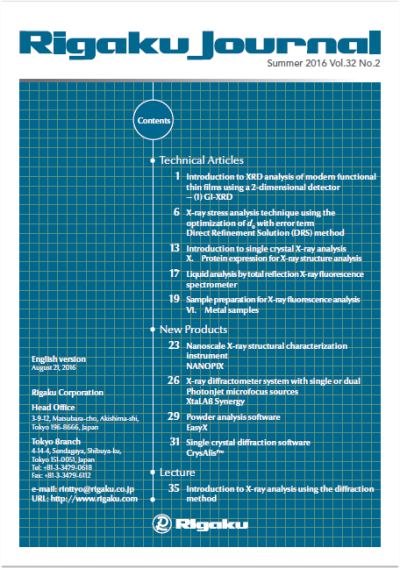Stress analysis using X-ray diffraction is a well-known, effective technique for nondestructive evaluation of residual stresses in the surface of materials. Among X-ray stress analyses, the sin2 ψ method is the most widely used and very common, especially in the industrial field. In this method, residual stress is calculated by assuming a plane stress condition as the stress state on the surface of materials. In detail, it is calculated by multiplying the X-ray stress constant specific to materials by the slope of a regression line between observed diffraction angle (2θ) and the sin2 ψ function. As a result, it is not necessary to obtain the information on crystal lattice spacing (d-value) in the strain-free condition d0, which is very difficult to know beforehand. This is why use of the sin2 ψ method has become widespread as an effective analysis method.
On the other hand, in manufacturing processes such as surface modification, thermal processing, and fabrication, the stresses applied to the surface of materials may not only be an equi-biaxial stress state but also a biaxial or a triaxial stress state. Therefore, the need for more accurate inspection or evaluation of the stress state in the surface of materials is increasing; namely, biaxial or triaxial stress analysis is strongly required.
The Direct Refinement Solution (DRS) method proposed here is an effective technique for biaxial or triaxial stress analysis. This method calculates stresses using an equation that most faithfully represents the relationship between stress and strain in isotropic elastic bodies.
Since the stress state on the surface of actual materials must be assumed for the stress calculation, the DRS method has been developed to improve accuracy in the calculations. As one of its applications, this method is capable of analyzing stresses on the basis of a single Debye-Scherrer obtained by the single exposure technique. This technique is employed in our new portable X-ray stress analyzer SmartSite RS, designed for on-site measurements that require compact and

